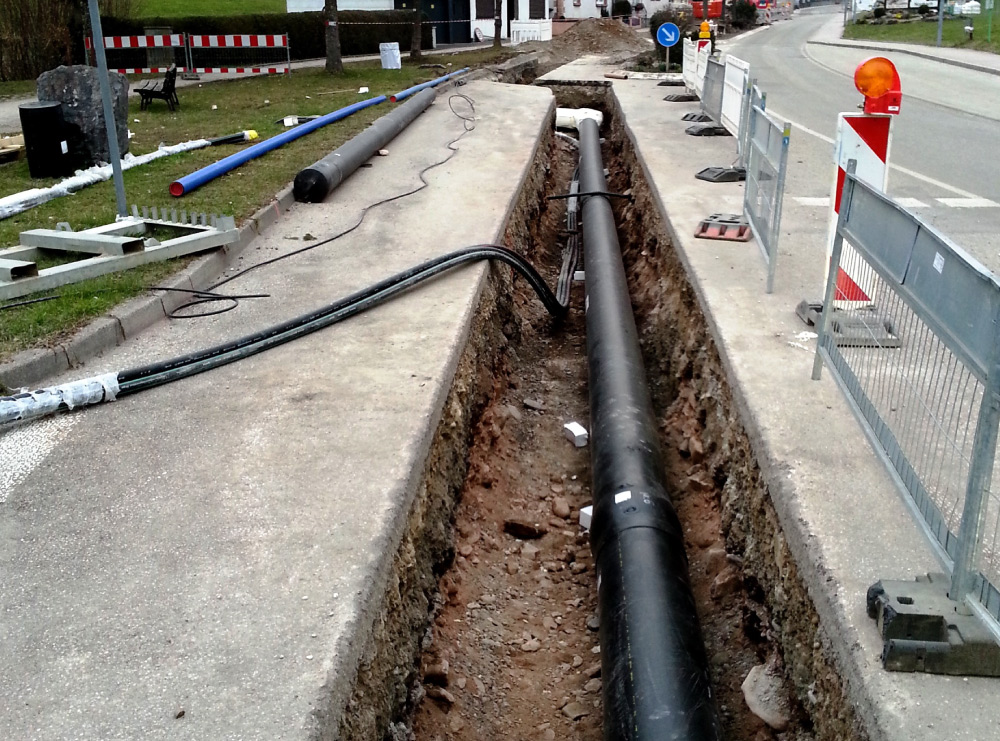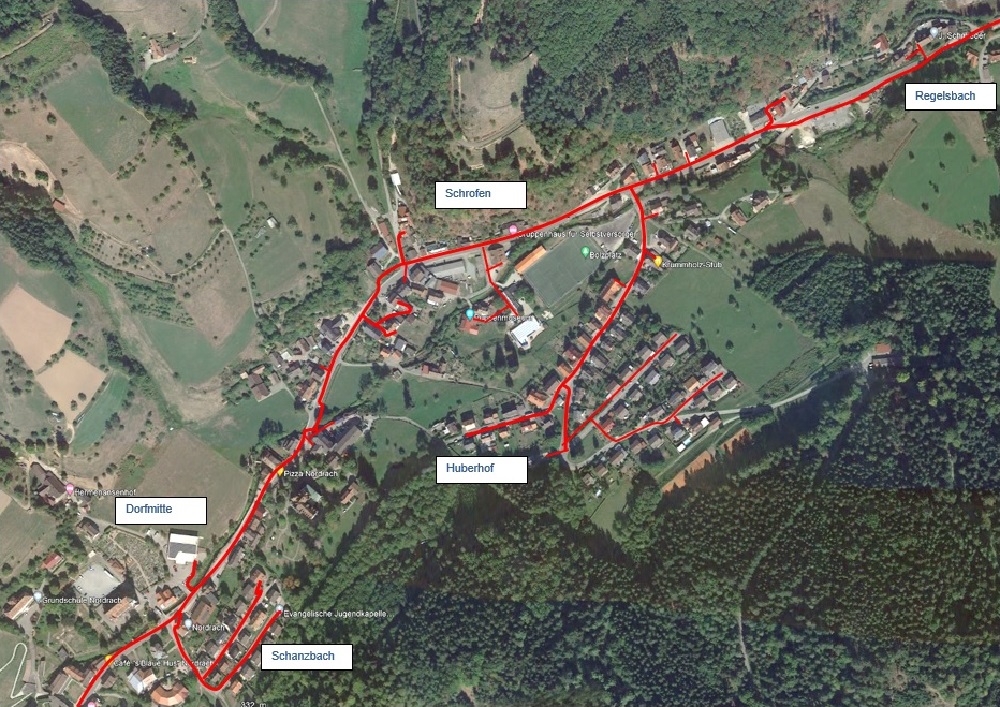Energy production
ORC power plant technology
Plant description
In recent years, the demand for mechanically dried timber has risen greatly. This trend still continues and calls for sawmills to increase the capacities of their drying chambers. Drying requires significant amounts of energy in the form of heat. Also, to heat production facilities, thermal energy is needed as well. The plant already in existence had been overstrained and was too small in the long run. For this reason, a wood-fuelled plant with a heating output of about 5,0 MW with subsequent ORC processing was installed.
The heating plant is designed to make use of the in-house byproducts of the sawmill (bark and wood shavings) and is equipped with a thermal oil heater and follow-up ORC process (Organic Rankine Cycle). The power generated in the process is supplied to the public grid under the terms of the national renewable energy act. The warm water generated through the heating process is supplied with a temperature of about 80°C.

Objectives of the investment:
- Securing increasing heat demands long-term.
- Use of CO2-neutral sawmill byproducts and of green waste.
- Achieving a higher energetic utilization of fuel heat to produce both thermal and electric energy with optimal efficiency. (This is done by abiding to all relevant emission and security rules.)
- Production of about 0,9 MW of electric energy under the terms of the renewable energy act
- Production of about 3,8 MW technical heat by extraction of thermal energy from the conversion-to-electricity process (for drying chambers and heat in buildings).
ORC plant
The plant is designed to make complete use of refined and unrefined wood (total wood volume 16.000 tons per years, e. g. sawmill byproducts such as bark, wood shavings, sawdust, wood chips as well as green waste). The newly constructed fuel depot (push floor system) is located centrally and can be filled with both internal and external fuels. The plant’s housing is a detached building that houses the heating and boiler installations, the engine room for the ORC plant, auxiliary rooms and the control room.
The wood is burned in the furnace and thermal oil heating compound. The ORC unit serves to produce power by absorbing the thermal energy generated in the thermal oil cauldron (approx. 300 °C, max. 10 bar) by means of a heat exchanger. The silicone oil used in the ORC process (approx. 270°C, 10 bar) requires lower vaporization heat than e.g. water. Thus, the ORC process generally works with a lower temperature level than the common water-vapor-process.
For the purpose of producing electricity, the silicone oil vapor is led via a turbine with a downstream generator. In a condensation heat exchanger, the silicone vapor is liquefied again and is subsequently fed to renewed vaporization. The smoke gas coming from the wood burning unit are guided through several economizers upon leaving the thermal oil heater and are then dedusted in a precleaner. Then, another dust removal by means of an electric filter takes place in order to meet the requirements of the administrative regulation called „TA-Luft“. The burnt-out ashes from wood burning falls into an ash conveyor at the end of a grate track and is transported into a container from there.
Monitoring of the unit is done with a process control system in a centrally located control center. Disturbances in operations can thus be reacted to immediately. A superior control unit takes over operations of the unit automatically in case of a disruption when no staff is present. On-call technicians will be informed about irregularities via dialers.
The application for a permit was submitted in spring 2006. Total construction time was six months so that test operations of the unit started on December 18, 2006 and it entered full operations in mid-January 2007, when it was also connected to the company’s warm water system.
Specifications of the ORC system
Turbine data operating pressure: 10,0 bar
Operating temperature: 295 °C
Terminal power: about 900 kW
Thermal heat supply
The heat dissipation from the silicone vapor condensator serves to produce warm water for heating purposes (drying chamber and heating in buildings).
The essential specifications of the heating circuit are:
District heat type: Heating condensator
Output: 3.800 kW thermal
Inlet temperature: 80 °C
Operating pressure: 3 bar
Thus, the extracted amount of heat runs to approx. 30.000 MWh.
This amount is sufficient to supply roughly 1.000 residential homes with heating. The fuel volume used in the thermal power plant of about 16.000 t/a replaces some 3.000.000 liter of fuel oil or 3.000.000 cubic meters of natural gas. This amounts to saving about 9.000 tons of CO2 emissions per year. Calculating with an operating time of about 8.000 h/a, this results to some 7.200 MWh of electricity produced. This amount of current can supply about 1.800 residential homes.
Local heating system
ORC plant technology
Connecting the homes of Nordrach Dorf
In several expansion steps since 2013 up until today, some 250 households in Nordrach were hooked up to the local heating system or received access to the home. Additionally, the Echtle sawmill counts various public buildings in town as well as three health clinics and a hotel among its customers. Altogether, since 2013, approximately 16.500 m of local heat conduction were installed.



















